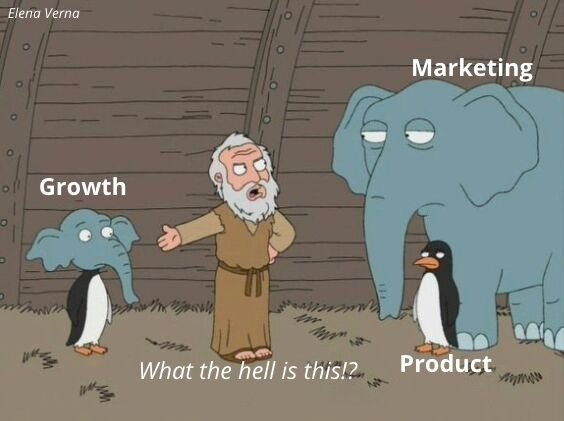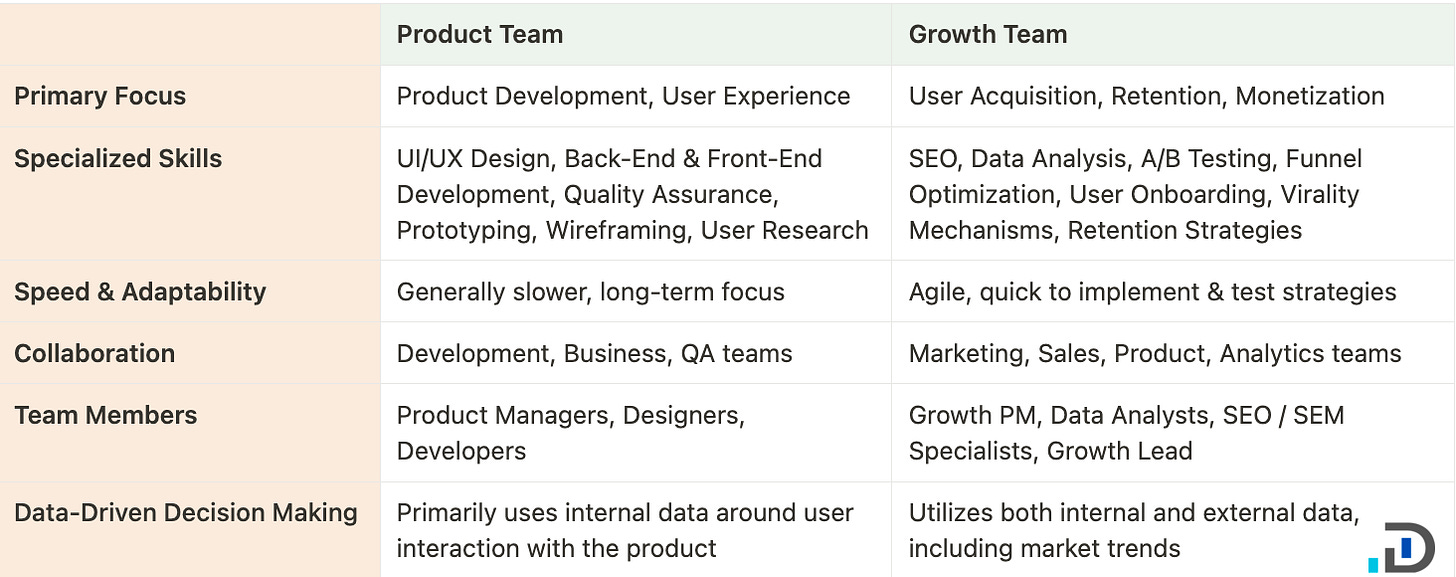What is this animal called "Growth"?
And how to better understand and implement it in your company.
It is a penguin, it is an elephant?
Even considered this as a funny picture, the meaning behind it makes me think about the interpretation of the growth role today, and how still many companies cannot fully recognize the importance of it and usually misinterpret it.
Before we deep dive into the major confusion I see over and over again, let's clarify what a growth is doing and what is the main focus.
The History of the Growth Function
Before we explore how we ended up here, it's good to go back and look through the evolution.
→ The concept of 'growth' within a business context has been with us for a long time, but transitioning into specific job roles like 'Growth Hacker' or 'Growth Manager' started to gain traction in the early 2010s.
One of the key pioneers was Sean Ellis, who coined the term “Growth Hacking”.
In terms of company popularity at that time, Dropbox was the first that I remember to use a referral program to drive user acquisition.
→ Around 2013, 2014 the growth function started to gain mainstream attention due to people like Andrew Chen who popularised the term, and more industries started adopting “growth' roles”.
→ For me, the key moment was around 2016, 2017, where we`ve started to see "growth functions" evolving into a more company-focused sub-teams and functions around User acquisition, user retention & engagement and product experimentation etc.
→ With the rise of data accessibility and demand for metrics and measurements of user behavior and insights, tools like Mixpanel and Amplitude made their way to the market, putting data into the hands of growth experts.
→ Fast forward today, the growth domain has moved beyond consumer products in the last couple of years and its also focuses on SaaS companies. The emergence of PLG (Product-Led Growth) and PLS (Product-Led Sales) strategies has been popularised by leaders like Elena Verna. Education platforms like Reforge further cement 'Growth' functions by offering courses, frameworks, and insights from top growth operators and companies.
Despite all the support the growth domain has received over the years, misunderstandings still remain today across the field, raising burning questions like:
Why do I need a growth person or team in the first place? What are they driving?
Is the growth team focusing on marketing or product activities (but wait, I have both teams already established)?
Where to place the team and who should be part of it?
These are a few of the top questions I usually receive when speaking to founders or someone from the leadership team.
To address this confusion, I'm going to provide guidance regarding the role of 'growth' in your organization.
Lets start with the obvious:
What is Growth?
Its a way to scale your business using data-drive methods, focusing on optimising and experimenting across 3 areas:
User acquisition → or how do you acquire customers?
User retention & engagement → or how you retain and increase the product usage of your customers?
Monetization → or how to monetize ( generating revenue ) from your customers?
One of the core functions of the team working on growth is to:
Generate hypothesis
Collect data around the hypothesis ( a.k.a validation )
Run experiments
Win ( implement test results ), Fail ( learn and re-run in some instances )
Iterate to point #1
Companies like: Airbnb, Dropbox, Netflix, Linkedin, Pinterest, Slack etc. are known for their innovative growth strategies and their ability to execute those strategies effectively in a compound scale.
What Growth is Not?
The list of confusions and misconceptions about growth can be very long, but I will focus on the one I`ve observed the most.
Misconception #1: The Growth Team Should Not Be Part of the Product Roadmap
It's a no-brainer that the product team builds and executes the roadmap. Have you ever been in a situation where you sit in a management meeting and you get a version of product planning or roadmap ? You weren't part of it; your focus and direction weren't taken into consideration, and suddenly what you had in mind for achieving your goals with product support won't happen.
For the same reasons, I believe a growth team should have input into the overall product roadmap, simply because it touches the product in so many ways. A growth team can't help scale the business if it's not aligned with the product team. This is because they require product team validation and resource allocation. What you don't want is both teams working on similar problems, focusing only on part of the product funnel, as this creates massive friction.
Misconception #2: Growth is Another Name for Marketing
A point that I stumble across a lot, especially when I see companies advertising growth roles, is that the job description is for a pure performance marketer. Or, when companies are looking for someone who needs to build marketing campaigns (both online and offline) and package that as a growth responsibility.
As I've mentioned above, the main duties of the growth team are to optimize and scale levers like user acquisition, retention, and monetization. Core marketing functions focuses more broadly on things like campaign optimization, brand awareness, and positioning. The skill sets are totally different, as are the team members' domain expertise. (The list goes on and on.)
Misconception #3: Having a Product Team Eliminates the Necessity for a Growth Team
Even if both teams touch the product, there's a notable difference in how they operate, their focus, and velocity.
A product team's main goal is to make the product as good as it can be. Their primary objectives are creating features, fixing bugs, and improving the UX. Do you start to see the difference? Product teams are usually less focused on expanding the user base or boosting retention and engagement (although some companies do branch out their product teams to focus on these levers).
A growth team is usually responsible for taking care of users both inside and outside the product/business. They dig deeply into data to understand user behavior and experiment with new approaches or hypotheses to improve metrics like sign-ups, activation rates, and revenue.
If you think about it, a growth team can actually complement the product team by distributing the product to more users and helping to get value out of the existing users.
Here is a more clear and detail breakdown:
Misconception #4: Growth is Only About “Hacking Stuff”
Yes, this is a label that has long been associated with the growth field, but in reality, the approach to experimenting on a problem is systematic and data-driven.
Growth hackers might not align their priorities with the company's business objectives and KPIs, often making quick changes to the product to drive a single metric.
What Are the Options To Structure a Growth Team?
Let's say you're convinced that you need a growth team and you've already got someone with the expertise to lead it. The question remains: where to position it and who should it report to?
You usually have, two options: Independent (centralized) or Cross-functional (decentralized) team
Independent Team
This team typically sits outside of any other department like Product, Marketing, or Data and has its own lead (Head/VP of Growth).
Depending on the company structure, a centralized team can have its own resources (PM, Marketing, Data Analyst, etc.).
Or you can have a mixed structure, where some of the roles remain in their original teams (e.g., Engineer stays in the Core Engineering Team), but still align their work priorities based on the growth team's roadmap and focus.
A centralised growth team usually reports to the CEO, COO, CRO ( Chief Revenue Officer ) or i`ve seen in some occasion to the CMO as well.
Cross-Functional Team
Here, the growth focus is split into sub-teams (or pods), and each one reports to a different cross-functional team leader.
You can have pods created and focused on user acquisition, activation, onboarding, engagement, and monetization.
In this format, there is no growth roadmap led by a single leader; instead, all activities are part of the larger product / business roadmap.
Typically, the reporting line will be to the VP of Product / Marketing or CPO / CMO.
Final Thoughts
As you can see, the function of a growth team in any business doesn't need to be confused with the functions of product or marketing teams. The main question isn't 'if' you need it, but 'when' you need it.






